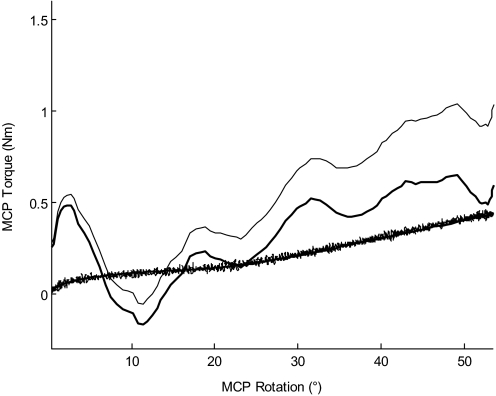FIG. 2.
Illustration of the method for processing the torque data. Shown are data for arm posture 1 from 1 subject. A mean polynomial coefficient was determined from the metacarpophalangeal (MCP) torque vs. MCP angle data of the multiple “slow stretch” trials (the lower thin line corresponds to 1 such slow stretch trial) in the given arm posture. This coefficient was used to estimate MCPpassive (lower thick line) during each “fast stretch” trial in that arm posture, using the MCP angle data of that trial. For the corresponding fast stretch trial, MCPpassive was subtracted from the recorded MCP torque (upper thin line) to yield MCPreflex (upper thick line). Note that the lower thin line and the lower thick line are superimposed.

